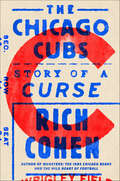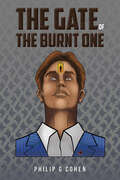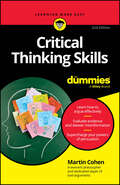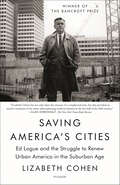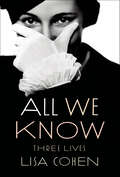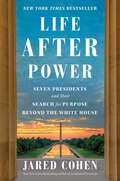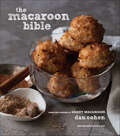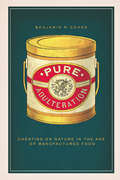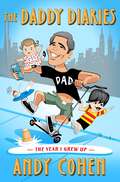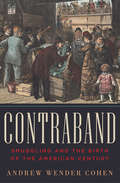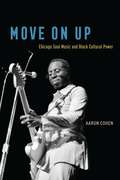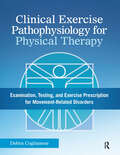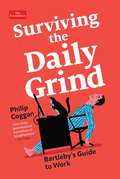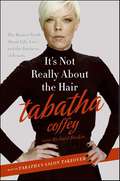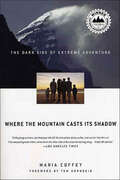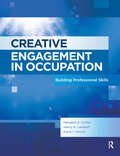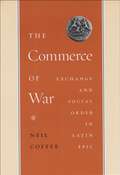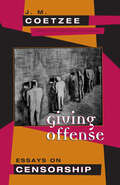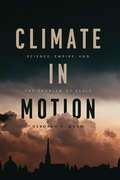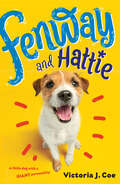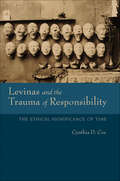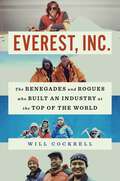- Table View
- List View
College Girl, Missing: The True Story of How a Young Woman Disappeared in Plain Sight
by Shawn Cohen"This book is the heartbreaking story that every parent dreads… Cohen sheds light on what really happened the night Lauren was never seen again." —David Crow, author of The Pale-Faced LieShe visited friends. She walked to a bar. She was right there... until she was gone.College student Lauren Spierer was pursuing her dreams, joining her boyfriend at a party school eight hundred miles from home. Social and gregarious, studying fashion and rooming with friends, Lauren embraced her new adventure with the zeal of a young woman who suddenly had everything she desired.But there was a dark side that she and her inner circle kept secret. And one warm June evening, after heading out with friends, she seemingly vanished. When investigators retraced Lauren's last steps using eyewitness accounts and security camera footage, the evidence ended at the doorstep of a group of wealthy, well-connected male students.With original reporting including new testimony witnesses never shared with police, College Girl, Missing takes readers back to that fateful night and dives into the disappearance that captured front-page headlines around the world. Investigative journalist Shawn Cohen breaks more than a decade of silence as he pursues the truth: what really happened to Lauren Spierer?
Theatre, Brief
by Robert Cohen Donovan Sherman Michelle Liu CarrigerTheatre, Brief emphasizes that theatre is a reflection of ourselves, because at the core of any great art is a commentary on the human experience. Theatre is not merely entertainment, but a way for people to connect with one another and express important ideas about our culture and society. Through coverage of design, acting, and directing, students are given a behind-the-scenes look at professional theatre artists performing their craft. Theatre, Brief immerses its readers in the world of professional theatre, giving them in-depth descriptions of many job functions and various aspects of a play’s production from beginning to end. Students will enjoy the “Why Study” Spotlight and sidebar features that connect the chapter topics to future careers.
The Chicago Cubs: Story of a Curse
by Rich CohenThe New York Times bestselling author of Monsters: The 1985 Chicago Bears and the Wild Heart of Football “knocks it out of the park” (Vanity Fair) in this captivating blend of sports reportage and memoir, exploring the history of the 2016 World Series champions, the Chicago Cubs.When Rich Cohen was eight years old, his father took him to see a Cubs game. On the way out of the park, his father asked him to make a promise. “Promise me you will never be a Cubs fan. The Cubs do not win,” he explained, “and because of that, a Cubs fan will have a diminished life determined by low expectations. That team will screw up your life.” Cohen became not just a Cubs fan but one of the biggest Cubs fans in the world. In this book, he captures the story of the team, its players and crazy days. Billy Sunday and Ernie Banks, Three Finger Brown and Ryne Sandberg, Bill Buckner, the Bartman Ball, Kris Bryant, Anthony Rizzo—the early dominance followed by a 107 year trek across the wilderness. It’s all here, in The Chicago Cubs: Story of a Curse—not just what happened, but what it felt like and what it meant. Featuring extensive interviews with players, owners, and coaches, this mix of memoir, reporting, history, and baseball theology—forty years in the making—has never been written because it never could be. Only with the 2016 World Series can the true arc of the story finally be understood.
The Gate of the Burnt One
by Philip G CohenBased on an intriguing alternative history hypothesis, this novel imagines a world where the Moors never left Southern Spain after their 800-year reign but instead expanded their empire across Europe. This fascinating premise is explored through the chaotic lens of a bumbling film crew in the Sahara desert. The director, lost in a haze of Moroccan kif, has embraced the local culture a little too enthusiastically. With the scriptwriters gone and the leading actor in a perpetual sulk inside his Airstream, the production is at a standstill. Enter Tinctorio Indigolin, a bitcoin billionaire on the run from a Shakespeare-quoting Irish assassin. In a bid to leverage a tax loss, Indigolin acquires the film rights, injecting a new lease of life into the project. Mysteriously, a captivating screenplay begins to appear on set, page by page, night after night. Penned by an enigmatic writer, the script proposes a world where the Moors didn’t just resist expulsion in 1492 but went on to dominate Spain, France, and Italy, creating an Islamic State of Europe. As the screenplay unfolds, it transforms the lives of everyone involved in the film. The narrative weaves through a labyrinth of twists, assassinations, and narrow escapes, employing the most unexpected methods, only to culminate in the most uplifting conclusion you’ll encounter this year.
Critical Thinking Skills For Dummies
by Martin CohenLearn how to argue points effectively, analyze information, and make sound judgments The ability to think clearly and critically is a lifelong benefit that you can apply in any situation that calls for reflection, analysis, and planning. Being able to think systematically and solve problems is also a great career asset. Critical Thinking Skills For Dummies helps you hone your thinking abilities and become a better communicator. You’ll find hands-on, active instruction and exercises that you can put to work today as you navigate social media and news websites, chat with AI, fact-check your own and others’ views, and more. Become a thinking machine, with this Dummies guide. Identify other people’s arguments and conclusions—and spot holes in them Evaluate evidence and produce more effective arguments in any situation Read between the lines of what people say and form your own judgments Apply critical thinking to school or college assignments to improve your academic performance This is the perfect Dummies title for students, researchers, and everyone who seeks to improve their reasoning and analysis ability.
Saving America's Cities: Ed Logue and the Struggle to Renew Urban America in the Suburban Age
by Lizabeth CohenWinner of the Bancroft PrizeIn twenty-first-century America, some cities are flourishing and others are struggling, but they all must contend with deteriorating infrastructure, economic inequality, and unaffordable housing. Cities have limited tools to address these problems, and many must rely on the private market to support the public good.It wasn’t always this way. For almost three decades after World War II, even as national policies promoted suburban sprawl, the federal government underwrote renewal efforts for cities that had suffered during the Great Depression and the war and were now bleeding residents into the suburbs. In Saving America’s Cities, the prizewinning historian Lizabeth Cohen follows the career of Edward J. Logue, whose shifting approach to the urban crisis tracked the changing balance between government-funded public programs and private interests that would culminate in the neoliberal rush to privatize efforts to solve entrenched social problems. A Yale-trained lawyer, rival of Robert Moses, and sometime critic of Jane Jacobs, Logue saw renewing cities as an extension of the liberal New Deal. He worked to revive a declining New Haven, became the architect of the “New Boston” of the 1960s, and, later, led New York State’s Urban Development Corporation, which built entire new towns, including Roosevelt Island in New York City.Logue’s era of urban renewal has a complicated legacy: Neighborhoods were demolished and residents dislocated, but there were also genuine successes and progressive goals. Saving America’s Cities is a dramatic story of heartbreak and destruction but also of human idealism and resourcefulness, opening up possibilities for our own time.
All We Know: Three Lives
by Lisa CohenEsther Murphy was a brilliant New York intellectual who dazzled friends and strangers with an unstoppable flow of conversation. But she never finished the books she was contracted to write—a painful failure and yet a kind of achievement.The quintessential fan, Mercedes de Acosta had intimate friendships with the legendary actresses and dancers of the twentieth century. Her ephemeral legacy lies in the thousands of objects she collected to preserve the memory of those performers and to honor the feelings they inspired.An icon of haute couture and a fashion editor of British Vogue, Madge Garland held bracing views on dress that drew on her feminism, her ideas about modernity, and her love of women. Existing both vividly and invisibly at the center of cultural life, she—like Murphy and de Acosta—is now almost completely forgotten.In All We Know, Lisa Cohen describes these women's glamorous choices, complicated failures, and controversial personal lives with lyricism and empathy. At once a series of intimate portraits and a startling investigation into style, celebrity, sexuality, and the genre of biography itself, All We Know explores a hidden history of modernism and pays tribute to three compelling lives. All We Know is one of Publishers Weekly's Top 10 Best Books of 2012
Life After Power: Seven Presidents and Their Search for Purpose Beyond the White House
by Jared CohenNew York Times Bestseller New York Times bestselling author of Accidental Presidents explores what happens after the most powerful job in the world: President of the United States.Former presidents have an unusual place in American life. King George III believed that George Washington&’s departure after two terms made him &“the greatest character of the age.&” But Alexander Hamilton worried former presidents might &“[wander] among the people like ghosts.&” They were both right. Life After Power tells the stories of seven former presidents, from the Founding to today. Each changed history. Each offered lessons about how to decide what to do in the next chapter of life. Thomas Jefferson was the first former president to accomplish great things after the White House, shaping public debates and founding the University of Virginia, an accomplishment he included on his tombstone, unlike his presidency. John Quincy Adams served in Congress and became a leading abolitionist, passing the torch to Abraham Lincoln. Grover Cleveland was the only president in American history to serve a nonconsecutive term. William Howard Taft became Chief Justice of the Supreme Court. Herbert Hoover shaped the modern conservative movement, led relief efforts after World War II, reorganized the executive branch, and reconciled John F. Kennedy and Richard Nixon. Jimmy Carter had the longest post-presidency in American history, advancing humanitarian causes, human rights, and peace. George W. Bush made a clean break from politics, bringing back George Washington&’s precedent, and reminding the public that the institution of the presidency is bigger than any person. Jared Cohen explores the untold stories in the final chapters of these presidents&’ lives, offering a gripping and illuminating account of how they went from President of the United States one day, to ordinary citizens the next. He tells how they handled very human problems of ego, finances, and questions about their legacy and mortality. He shows how these men made history after they left the White House.
The Macaroon Bible
by Dan CohenJust like the macaroons you grew up with, only way betterForget your mother’s macaroons—here are recipes updated for a new generation, with flavors such as Salted Caramel, Red Velvet, and Espresso. Author Dan Cohen, founder of Danny Macaroons, rose to fame selling his delicious macs in New York City restaurants, cafes, and food fairs by offering the beloved treats in varieties no one had ever thought of before: Guava, Eggnog, Peanut Butter & Jelly, Bourbon, Pistachio . . . the list goes on and on. It turns out these macaroons are easy to make at home, too. No fancy equipment or techniques necessary, and the classic recipe requires just five ingredients. Even non-bakers can make super-tasty macaroons at home, although more adventurous people might want to try whipping up some Chocolate-Banana-Nut or Tiramisu Macaroon Sandwiches. Another great thing about these recipes is that almost all of them are naturally gluten-free. The only challenge will be resisting them, because they’re so soft and yummy, you might not be able to stop yourself.
Pure Adulteration: Cheating on Nature in the Age of Manufactured Food
by Benjamin R. CohenBenjamin R. Cohen uses the pure food crusades at the turn of the twentieth century to provide a captivating window onto the origins of manufactured foods in the United States. In the latter nineteenth century, extraordinary changes in food and agriculture gave rise to new tensions in the ways people understood, obtained, trusted, and ate their food. This was the Era of Adulteration, and its concerns have carried forward to today: How could you tell the food you bought was the food you thought you bought? Could something manufactured still be pure? Is it okay to manipulate nature far enough to produce new foods but not so far that you question its safety and health? How do you know where the line is? And who decides? In Pure Adulteration, Benjamin R. Cohen uses the pure food crusades to provide a captivating window onto the origins of manufactured foods and the perceived problems they wrought. Cohen follows farmers, manufacturers, grocers, hucksters, housewives, politicians, and scientific analysts as they struggled to demarcate and patrol the ever-contingent, always contested border between purity and adulteration, and as, at the end of the nineteenth century, the very notion of a pure food changed. In the end, there is (and was) no natural, prehuman distinction between pure and adulterated to uncover and enforce; we have to decide. Today’s world is different from that of our nineteenth-century forebears in many ways, but the challenge of policing the difference between acceptable and unacceptable practices remains central to daily decisions about the foods we eat, how we produce them, and what choices we make when buying them.
The Daddy Diaries: The Year I Grew Up
by Andy CohenThe Instant New York Times Bestseller!New York Times bestselling author Andy Cohen goes from bottle service to baby bottles in a hilarious, heartwarming, and name-dropping account of the most important year of his life.Andy Cohen has taken on the most important job of his life—father— and boy (and girl!) does he have a lot to say about it!One of Andy Cohen’s most momentous years starts off with a hangover the morning after an epic New Year’s Eve broadcast. But Andy doesn’t have time to dwell on the drama, as his role as media mogul is now matched with the responsibilities, joys, and growing pains of parenthood.This fast-paced, mile-a-minute look behind the scenes of living the so-called glamorous life in Manhattan now takes firm aim at life at home. With a three-year-old son, Ben, and a daughter, Lucy, born in May, stories of late-night parties are replaced by early mornings with Ben, drama at the play-ground, and the musings of a single dad trying to navigate having it all. All this is set against the backdrop of constant Housewives drama, hijinks behind the scenes at Watch What Happens Live, a revolving door of famous faces, and a worried mother (and newly minted grandmother) in St. Louis.Buckle up, bottle up, and get ready for a laugh-out-loud and surprisingly poignant look at the ways in which family changes everything and the superficial gets very real. Watch what happens!
Contraband: Smuggling and the Birth of the American Century
by Andrew Wender CohenHow skirting the law once defined America’s relation to the world. In the frigid winter of 1875, Charles L. Lawrence made international headlines when he was arrested for smuggling silk worth $60 million into the United States. An intimate of Boss Tweed, gloriously dubbed “The Prince of Smugglers,” and the head of a network spanning four continents and lasting half a decade, Lawrence scandalized a nation whose founders themselves had once dabbled in contraband. Since the Revolution itself, smuggling had tested the patriotism of the American people. Distrusting foreign goods, Congress instituted high tariffs on most imports. Protecting the nation was the custom house, which waged a “war on smuggling,” inspecting every traveler for illicitly imported silk, opium, tobacco, sugar, diamonds, and art. The Civil War’s blockade of the Confederacy heightened the obsession with contraband, but smuggling entered its prime during the Gilded Age, when characters like assassin Louis Bieral, economist “The Parsee Merchant,” Congressman Ben Butler, and actress Rose Eytinge tempted consumers with illicit foreign luxuries. Only as the United States became a global power with World War I did smuggling lose its scurvy romance. Meticulously researched, Contraband explores the history of smuggling to illuminate the broader history of the United States, its power, its politics, and its culture.
Move On Up: Chicago Soul Music and Black Cultural Power
by Aaron CohenA Chicago Tribune Book of 2019, Notable Chicago Reads A Booklist Top 10 Arts Book of 2019 A No Depression Top Music Book of 2019 Curtis Mayfield. The Chi-Lites. Chaka Khan. Chicago’s place in the history of soul music is rock solid. But for Chicagoans, soul music in its heyday from the 1960s to the 1980s was more than just a series of hits: it was a marker and a source of black empowerment. In Move On Up, Aaron Cohen tells the remarkable story of the explosion of soul music in Chicago. Together, soul music and black-owned businesses thrived. Record producers and song-writers broadcast optimism for black America’s future through their sophisticated, jazz-inspired productions for the Dells and many others. Curtis Mayfield boldly sang of uplift with unmistakable grooves like “We’re a Winner” and “I Plan to Stay a Believer.” Musicians like Phil Cohran and the Pharaohs used their music to voice Afrocentric philosophies that challenged racism and segregation, while Maurice White of Earth, Wind, and Fire and Chaka Khan created music that inspired black consciousness. Soul music also accompanied the rise of African American advertisers and the campaign of Chicago’s first black mayor, Harold Washington, in 1983. This empowerment was set in stark relief by the social unrest roiling in Chicago and across the nation: as Chicago’s homegrown record labels produced rising stars singing songs of progress and freedom, Chicago’s black middle class faced limited economic opportunities and deep-seated segregation, all against a backdrop of nationwide deindustrialization. Drawing on more than one hundred interviews and a music critic’s passion for the unmistakable Chicago soul sound, Cohen shows us how soul music became the voice of inspiration and change for a city in turmoil.
Clinical Exercise Pathophysiology for Physical Therapy: Examination, Testing, and Exercise Prescription for Movement-Related Disorders
by Debra CoglianeseIn order to effectively examine, test, and treat patients with exercise, physical therapists need to understand how physiology from the cellular to the systems level provides the basis for normal responses to exercise. But that is not enough. Knowledge about pathophysiology, the changes that lead to abnormal responses to exercise in different patient populations, is also essential. Clinical Exercise Pathophysiology for Physical Therapy: Examination, Testing, and Exercise Prescription for Movement-Related Disorders is a comprehensive reference created to answer the “why” and the “how” to treat patients with exercise by offering both comprehensive information from the research literature, as well as original patient cases.Dr. Debra Coglianese, along with her contributors, have arranged Clinical Exercise Pathophysiology for Physical Therapy into three parts: foundations of physiological responses, pathophysiology of deconditioning and physiology of training, and pathophysiology considerations and clinical practice. The chapters present the physiology and pathophysiology for defined patient populations consistent with the American Physical Therapy Association’s Guide to Physical Therapy Practice.Patient cases also supplement each chapter to illustrate how understanding the content of the chapter informs physical therapy examination, testing, and treatment. The patient/client management model from the Guide to Physical Therapy Practice defines the structure of the patient cases, and the International Classification of Function, Disability, and Health (ICF) model of disablement has been inserted into each patient case. Highlighted “Clinician Comments” appear throughout each patient case to point out the critical thinking considerations.Included with the text are online supplemental materials for faculty use in the classroom.Clinical Exercise Pathophysiology for Physical Therapy: Examination, Testing, and Exercise Prescription for Movement-Related Disorders is a groundbreaking reference for the physical therapy student or clinician looking to understand how physiology and pathophysiology relate to responses to exercise in different patient populations.
Surviving the Daily Grind: Bartleby's Guide to Work (Economist Books)
by Philip CogganOne of today's pre-eminent financial journalists, and the Bartleby columnist for the Economist, reveals strategies and tips for surviving—and making the most out of—the work week. We spend a lot of our time at work and would be depressed with nothing to do. But when it gets to Monday, many of us are already longing for the weekend and the prospect of escape. How did work become so tedious and stressful? And is there anything we can do to make it better? Based on his popular Economist Bartleby column, Philip Coggan rewrites the rules of work to help us survive the daily grind. Ranging widely, he encourages us to cut through mindless jargon, pointless bureaucracy and endless meetings to find a new, more creative—and less frustrating—ways to get by and get things done at work. Incisive, original, and endlessly droll, this is the guide for beleaguered underlings and harried higher-ups alike. As Rousseau might have said: "Man was born free, but is everywhere stuck in a meeting." If you've ever thought there must be a better way, this is the book for you.
It's Not Really About the Hair: The Honest Truth About Life, Love, and the Business of Beauty
by Tabatha Coffey Richard BuskinFans of the hit Bravo show Tabatha's Salon Takeover tune in for the straight-shooting, unvarnished commentary of its ballsy, stylish, and savvy star. Though millions admire Tabatha Coffey's unflinching honesty and never-say-die attitude, some do not and have even taken to name-calling. Refusing to let others define her, she has reclaimed the word "bitch," transforming it to fit the person she is: Brave, Intelligent, Tenacious, Creative, and Honest. In It's Not Really About the Hair, this deeply private woman shares the experiences of her own life to encourage you to get in touch with your own inner bitch. Tabatha reveals how she used her strength and openness to help define her signature look, personal relationships, life choices, and tenacious work ethic—one that in her own words likens her to "a pit bull with a bone." Here are the people and the circumstances that have led her to a place of honesty, self-assurance, satisfaction, and success—from her tough-minded mum to her famous mentors, her peers, and clients.Part memoir, part business manual, and part coaching guide on achieving self-acceptance and love, It's Not Really About the Hair teaches you that it's all right to be who you are, stand up for what you believe in, and do what makes you happy without being defined by others.Tabatha Coffey's raw, funny, shocking, and always inspirational story will encourage you to celebrate the long-lasting and most important beauty of all—the true beauty that is you.
Where the Mountain Casts Its Shadow: The Dark Side of Extreme Adventure
by Maria CoffeyMaria Coffey's Where the Mountain Casts Its Shadow is a powerful, affecting and important book that exposes the far reaching personal costs of extreme adventure.Without risk, say mountaineers, there would be none of the self-knowledge that comes from pushing life to its extremes. For them, perhaps, it is worth the cost. But when tragedy strikes, what happens to the people left behind? Why would anyone choose to invest in a future with a high-altitude risk-taker? What is life like in the shadow of the mountain? Such questions have long been taboo in the world of mountaineering. Now, the spouses, parents and children of internationally renowned climbers finally break their silence, speaking out about the dark side of adventure.Maria Coffey confronted one of the harshest realities of mountaineering when her partner Joe Tasker disappeared on the Northeast Ridge of Everest in 1982. In Where the Mountain Casts Its Shadow, Coffey offers an intimate portrait of adventure and the conflicting beauty, passion, and devastation of this alluring obsession. Through interviews with the world's top climbers, or their widows and families-Jim Wickwire, Conrad Anker, Lynn Hill, Joe Simpson, Chris Bonington, Ed Viesturs, Anatoli Boukreev, Alex Lowe, and many others-she explores what compels men and women to give their lives to the high mountains. She asks why, despite the countless tragedies, the world continues to laud their exploits.With an insider's understanding, Coffey reveals the consequences of loving people who pursue such risk-the exhilarating highs and inevitable lows, the stress of long separations, the constant threat of bereavement, and the lives shattered in the wake of climbing accidents.
Creative Engagement in Occupation: Building Professional Skills
by Margaret Coffey Nancy Lamport Gayle HerschIn occupational therapy, creative thinking and problem-solving skills are critical aspects of delivering appropriate intervention programs. These professional characteristics are essential components in the clinical reasoning process that facilitate meaningful therapy.Creative Engagement in Occupation: Building Professional Skills is a comprehensive text on the recognition and development of creative thinking as a primary tool in occupational therapy.Margaret S. Coffey, Nancy K. Lamport, Gayle I. Hersch, and their contributors, guide occupational therapy students and clinicians in identifying their creative potential for designing activities to address client goals. By actively engaging in the creative process, readers can enlist the creative potential of their clients to overcome or compensate for limitations in occupational performance.The skillful application of activity analysis is advanced through the reader’s use of their own creativity in developing meaningful intervention programs for clients. References to the AOTA’s Occupational Therapy Practice Framework further support this aspect of the text as readers begin to sense and use their own and the client’s creativity in developing collaborative therapist-client partnerships.Experience these creative opportunities inside Creative Engagement in Occupation: Building Professional Skills through the use of case studies, discussion and individual activities, role playing, and worksheets. Each chapter offers didactic and experiential applications to develop and practice using creativity as it applies to occupational therapy practice.Included with the text are online supplemental materials for faculty use in the classroom. Creative Engagement in Occupation: Building Professional Skills offers a unique opportunity for occupational therapy students, faculty, and clinicians to develop their potential in delivering creative occupational therapy intervention.
Fred Stays with Me!
by Nancy CoffeltA child describes how she lives sometimes with her mother and sometimes with her father, but her dog is her constant companion.
The Commerce of War: Exchange and Social Order in Latin Epic
by Neil CoffeeLatin epics such as Virgil’s Aeneid, Lucan’s Civil War, and Statius’s Thebaid addressed Roman aristocrats whose dealings in gifts, favors, and payments defined their conceptions of social order. In The Commerce of War, Neil Coffee argues that these exchanges play a central yet overlooked role in epic depictions of Roman society. Tracing the collapse of an aristocratic worldview across all three poems, Coffee highlights the distinction they draw between reciprocal gift giving among elites and the more problematic behaviors of buying and selling. In the Aeneid, customary gift and favor exchanges are undermined by characters who view human interaction as short-term and commodity-driven. The Civil War takes the next logical step, illuminating how Romans cope once commercial greed has supplanted traditional values. Concluding with the Thebaid, which focuses on the problems of excessive consumption rather than exchange, Coffee closes his powerful case that these poems constitute far-reaching critiques of Roman society during its transition from republic to empire.
Giving Offense: Essays on Censorship
by J.M. CoetzeeWinner of the 2003 Nobel Prize in Literature. J. M. Coetzee presents a coherent, unorthodox analysis of censorship from the perspective of one who has lived and worked under its shadow. The essays collected here attempt to understand the passion that plays itself out in acts of silencing and censoring. He argues that a destructive dynamic of belligerence and escalation tends to overtake the rivals in any field ruled by censorship. From Osip Mandelstam commanded to compose an ode in praise of Stalin, to Breyten Breytenbach writing poems under and for the eyes of his prison guards, to Aleksander Solzhenitsyn engaging in a trial of wits with the organs of the Soviet state, Giving Offense focuses on the ways authors have historically responded to censorship. It also analyzes the arguments of Catharine MacKinnon for the suppression of pornography and traces the operations of the old South African censorship system. "The most impressive feature of Coetzee's essays, besides his ear for language, is his coolheadedness. He can dissect repugnant notions and analyze volatile emotions with enviable poise."—Kenneth Baker, San Francisco Chronicle Book Review "Those looking for simple, ringing denunciations of censorship's evils will be disappointed. Coetzee explicitly rejects such noble tritenesses. Instead . . . he pursues censorship's deeper, more fickle meanings and unmeanings."—Kirkus Reviews "These erudite essays form a powerful, bracing criticism of censorship in its many guises."—Publishers Weekly "Giving Offense gets its incisive message across clearly, even when Coetzee is dealing with such murky theorists as Bakhtin, Lacan, Foucault, and René; Girard. Coetzee has a light, wry sense of humor."—Bill Marx, Hungry Mind Review "An extraordinary collection of essays."—Martha Bayles, New York Times Book Review "A disturbing and illuminating moral expedition."—Richard Eder, Los Angeles Times Book Review
Climate in Motion: Science, Empire, and the Problem of Scale
by Deborah R. CoenToday, predicting the impact of human activities on the earth’s climate hinges on tracking interactions among phenomena of radically different dimensions, from the molecular to the planetary. Climate in Motion shows that this multiscalar, multicausal framework emerged well before computers and satellites. Extending the history of modern climate science back into the nineteenth century, Deborah R. Coen uncovers its roots in the politics of empire-building in central and eastern Europe. She argues that essential elements of the modern understanding of climate arose as a means of thinking across scales in a state—the multinational Habsburg Monarchy, a patchwork of medieval kingdoms and modern laws—where such thinking was a political imperative. Led by Julius Hann in Vienna, Habsburg scientists were the first to investigate precisely how local winds and storms might be related to the general circulation of the earth’s atmosphere as a whole. Linking Habsburg climatology to the political and artistic experiments of late imperial Austria, Coen grounds the seemingly esoteric science of the atmosphere in the everyday experiences of an earlier era of globalization. Climate in Motion presents the history of modern climate science as a history of “scaling”—that is, the embodied work of moving between different frameworks for measuring the world. In this way, it offers a critical historical perspective on the concepts of scale that structure thinking about the climate crisis today and the range of possibilities for responding to it.
Fenway and Hattie (Fenway and Hattie #1)
by Victoria J. CoeThis lovable new series introduces a little dog with a GIANT personality! Fenway is an excitable and endlessly energetic Jack Russell terrier. He lives in the city with Food Lady, Fetch Man, and—of course—his beloved short human and best-friend-in-the-world, Hattie. But when his family moves to the suburbs, Fenway faces a world of changes. He's pretty pleased with the huge Dog Park behind his new home, but he's not so happy about the Evil Squirrels that taunt him from the trees, the super-slippery Wicked Floor in the Eating Room, and the changes that have come over Hattie lately. Rather than playing with Fenway, she seems more interested in her new short human friend, Angel, and learning to play baseball. His friends in the Dog Park next door say Hattie is outgrowing him, but that can't be right. And he's going to prove it! Get a dog's-eye view of the world in this heartwarming, enthusiastic "tail" about two best friends.
Levinas and the Trauma of Responsibility: The Ethical Significance of Time (Studies in Continental Thought)
by Cynthia D. CoeLevinas's account of responsibility challenges dominant notions of time, autonomy, and subjectivity according to Cynthia D. Coe. Employing the concept of trauma in Levinas's late writings, Coe draws together his understanding of time and his claim that responsibility is an obligation to the other that cannot be anticipated or warded off. Tracing the broad significance of these ideas, Coe shows how Levinas revises our notions of moral agency, knowledge, and embodiment. Her focus on time brings a new interpretive lens to Levinas's work and reflects on a wider discussion of the fragmentation of human experience as an ethical subject. Coe's understanding of trauma and time offers a new appreciation of how Levinas can inform debates about gender, race, mortality, and animality.
Everest, Inc.: The Renegades and Rogues Who Built an Industry at the Top of the World
by Will CockrellFeaturing original interviews with mountain guides and climbers—including Jimmy Chin and Conrad Anker—this vivid and authoritative adventure history chronicles one of the least likely industries on Earth: guided climbing on Mount Everest.Anyone who has read Jon Krakauer&’s Into Thin Air or has seen a recent photo of climbers standing in line to get to the top of Everest may think they have the mountain pretty well figured out. It&’s an extreme landscape where bad weather and incredible altitude can occasionally kill, but more so an overcrowded, trashed-out recreation destination where rich clients pad their egos—and social media feeds—while exploiting local Sherpas. There&’s some truth to these clichés, but they&’re a sliver of the story. Unlike any book to date, Everest, Inc. gets to the heart of the mountain through the definitive story of its greatest invention: the Himalayan guiding industry. It all began in the 1980s with a few boot-strapping entrepreneurs who paired raw courage and naked ambition with a new style of expedition planning. Many of them are still living and climbing today, and as a result of their astonishing success, ninety percent of the people now on Everest are clients or employees of guided expeditions. Studded with quotes from original interviews with more than a hundred western and Sherpa climbers, clients, writers, filmmakers, and even a Hollywood actor, Everest, Inc. foregrounds the voices of the people who have made the mountain what it is today. And while there is plenty of high-altitude drama in unpacking the last forty years of Everest tragedy and triumph, it ultimately transcends stereotypes and tells the uplifting counternarrative of the army of journeymen and women who have made people&’s dreams come true, and of the Nepalis who are pushing the industry into the future.


